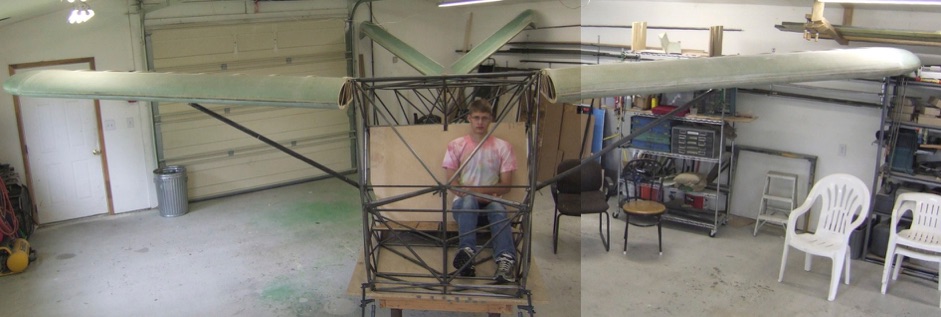ladasa - Light ADA Sport aircraft

Why Another LSA?
With over 100 purpose-built new aircraft fitting the LSA category, and several hundred existing designs that also qualify, why are we designing yet another one? The answer, simply, is that there exists a large gap in the current offerings relative to a particular demographic with which we are quite familiar--the older, heavier, wider, gymnastically challenged or handicapped, individual that simply cannot climb into, or fit into, or safely exit, the existing designs.
Most aircraft designers work to the particular tastes, styles and constraints of their specific, individual situations. As a consequence, the preponderance of designs on the market assume owners and flyers who are young, light, slim, and athletic. This allows the designer to almost completely ignore the ergonomics of getting into and out of the aircraft, and usually results in a cabin size suitable for a pair of 5’10” 170-pounders (i.e. approximately 40 inches wide with limited head and leg room), and who are extremely limber and capable of lifting themselves by their arms. The typical design places the seats well above normal seating height, typically at an extreme tilt angle, and usually blocked by aircraft structure that must be maneuvered around using precarious motions.
We think someone needs to design an airplane for the rest of us. We had several important design requirements at the top of our list that are usually missing from current designs, and we know of no existing design that incorporates all of what we consider to be the essential requirements.
First, the airplane should be as easy to get in and out of as a typical automotive sedan. Specifically, it should be possible for someone who is wheelchair bound but who can safely transfer from a wheelchair to a car, to also get in and out of the aircraft.
Second, there should be adequate room for a 300+ pound person without crowding the other seat, and it should be possible to put two such people in the aircraft and stay within the LSA envelope (possibly by leaving out some fuel).
Third, it should accommodate people up to 6’6” tall, but have controls that are adjustable for quite short people. This should include dual controls so it can be used for flight instruction, and this implies adjustable rudder pedals with a lot of adjustment range.
Fourth, it should not require the kind of mental and physical dexterity typically required to handle a conventional (tailwheel) aircraft. We have friends who are discovering that advancing age has robbed them of the agility required to safely fly their aircraft, so we insisted on a direct steer nose wheel and simple motorcycle style brakes mounted right on the stick.
Fifth, we wanted to achieve all this without having to resort to an exotic or expensive engine to stay in the LSA category and have a good useful load. The prototype is using an O-200 engine with lightweight accessories. It would fly just as well with any 100 horse motor.
Lastly, we wanted a construction approach that used the kinds of techniques most builders are familiar with--wood, steel tube, fabric, and a few molded composite parts. This tends to result in a fairly light empty weight--we are shooting for the low 700s and seem to be on target with most of the airframe finished.
We also wanted benign flight characteristics, so we chose a relatively thick, turbulent airfoil section with very gentle stall characteristics. We gave the aircraft a generously sized tail on a long aft fuselage that results in high stability coefficients. And we used the latest techniques to ensure that roll control is light but effective, and that the controls are well harmonized.
First flight is anticipated in 2011. Check back for updates.
Started March 2009 - First flight in 2011
